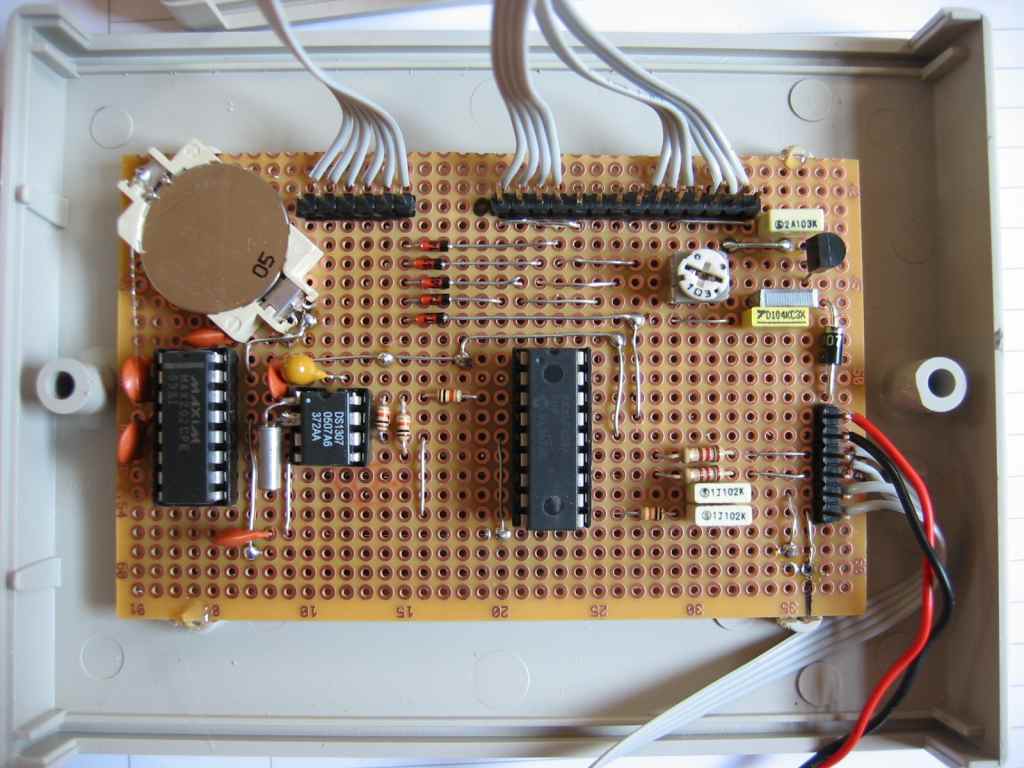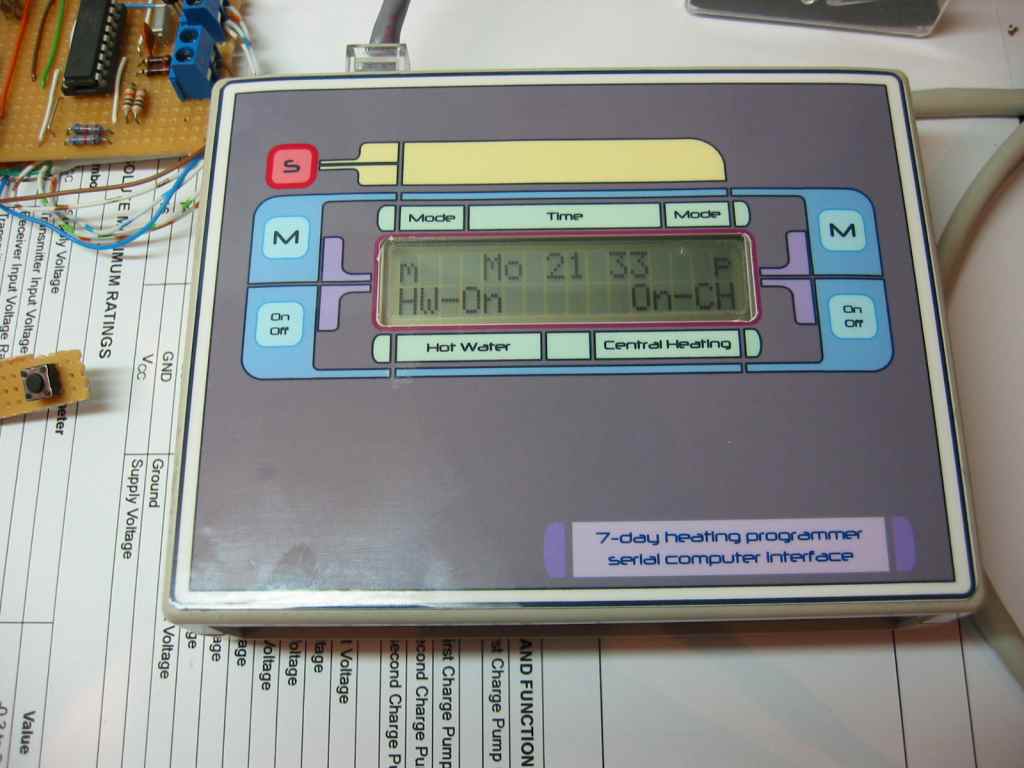The programmer and boiler control relays are contained in separate units so that the relays can be located close to the boiler while the programmer itself can be located anywhere in the house using low voltage connections back to the relay unit. Besides you can also make a serial interface connection local to the programmer in which case you only need 4 wires for power and relay controls.Features
* Independent control for heating and hot water.
* 10 flexible program entries.
* Programs can be set to operate Mon-Fri / Sat-Sun / Mon-Sun.
* Manual advance for water and heating
* Water and heating can be independently set to manual or programmed control.
* Operation and setup from front panel or remote serial CLI
* Battery backup for Real Time Clock (RTC), program settings and manual control.
* Programmer can be located remotely from boiler using low voltage signals over CAT5 or 6-core alarm cable.
* RS232 serial interface with command line interface allows full control and setting from any computer.
* Front panel control can be locked-out from serial CLI
* Based on Microchip PIC 16F628A microcontroller










